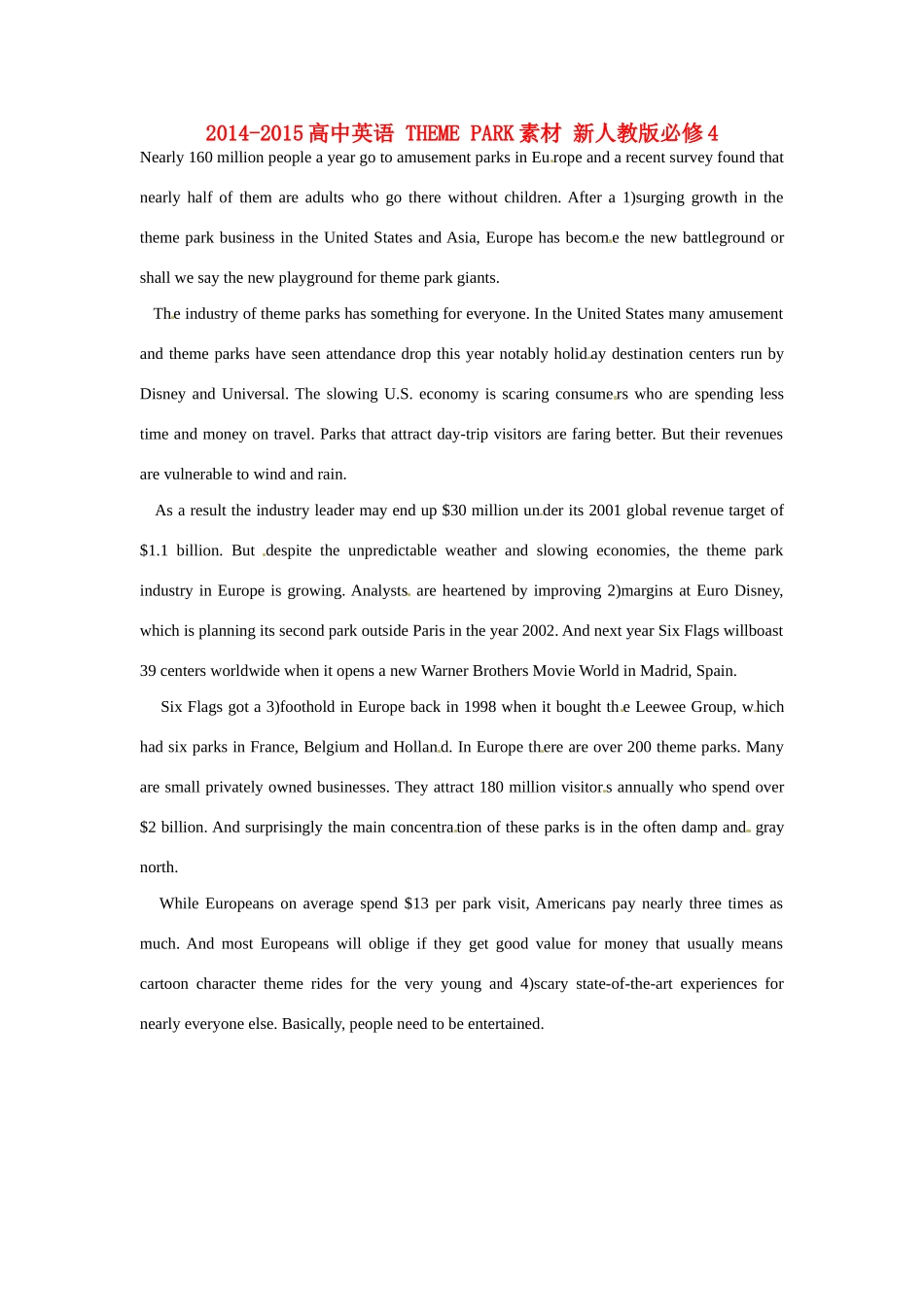2014-2015 高中英语 THEME PARK 素材 新人教版必修 4Nearly 160 million people a year go to amusement parks in Eu rope and a recent survey found that nearly half of them are adults who go there without children. After a 1)surging growth in the theme park business in the United States and Asia, Europe has becom e the new battleground or shall we say the new playground for theme park giants. The industry of theme parks has something for everyone. In the United States many amusement and theme parks have seen attendance drop this year notably holid ay destination centers run by Disney and Universal. The slowing U.S. economy is scaring consume rs who are spending less time and money on travel. Parks that attract day-trip visitors are faring better. But their revenues are vulnerable to wind and rain. As a result the industry leader may end up $30 million un der its 2001 global revenue target of $1.1 billion. But despite the unpredictable weather and slowing economies, the theme park industry in Europe is growing. Analysts are heartened by improving 2)margins at Euro Disney, which is planning its second park outside Paris in the year 2002. And next year Six Flags willboast 39 centers worldwide when it opens a new Warner Brothers Movie World in Madrid, Spain. Six Flags got a 3)foothold in Europe back in 1998 when it bought th e Leewee Group, w hich had six parks in France, Belgium and Hollan d. In Europe th ere are over 200 theme parks. Many are small privately owned businesses. They attract 180 million visitor s annually who spend over $2 billion. And surprisingly the main concentra tion of these parks is in the often damp and gray north. While Europeans on average spend $13 per park visit, Americans pay nearly three times as much. And most Europeans will oblige if they get good value for money that usually means cartoon character theme rides for the very young and 4)scary state-of-the-art experiences for nearly everyone else. Basically, people need to be entertained.
